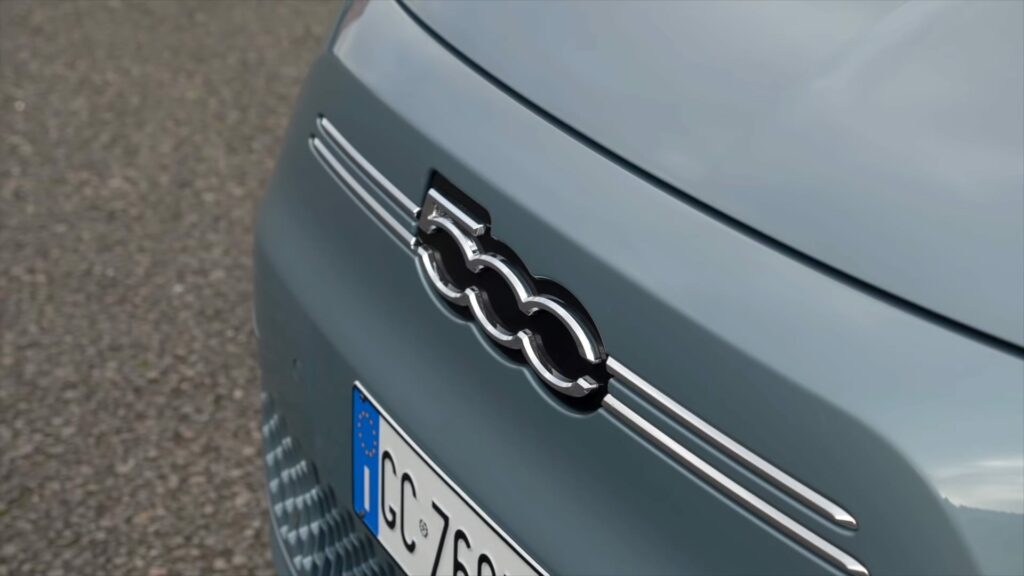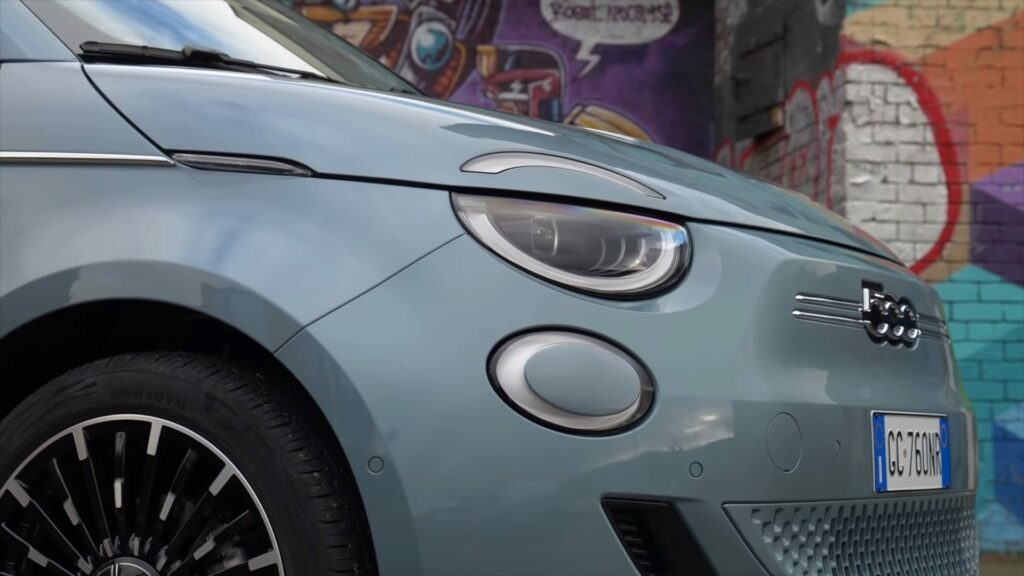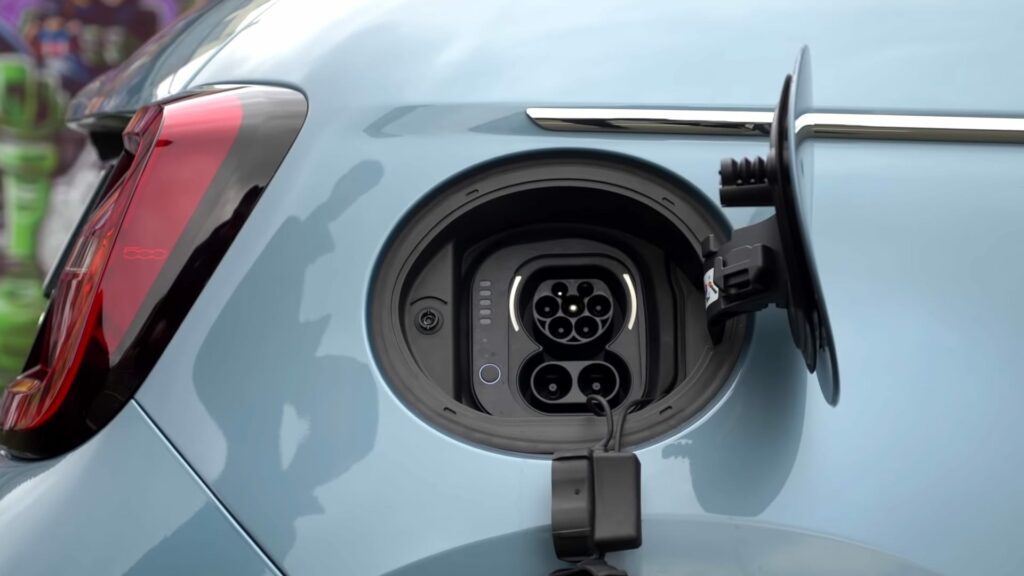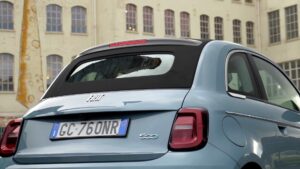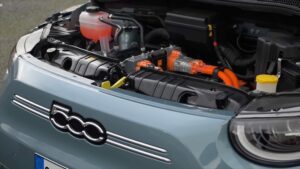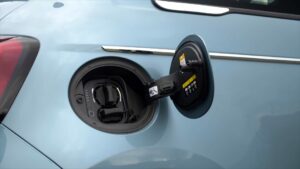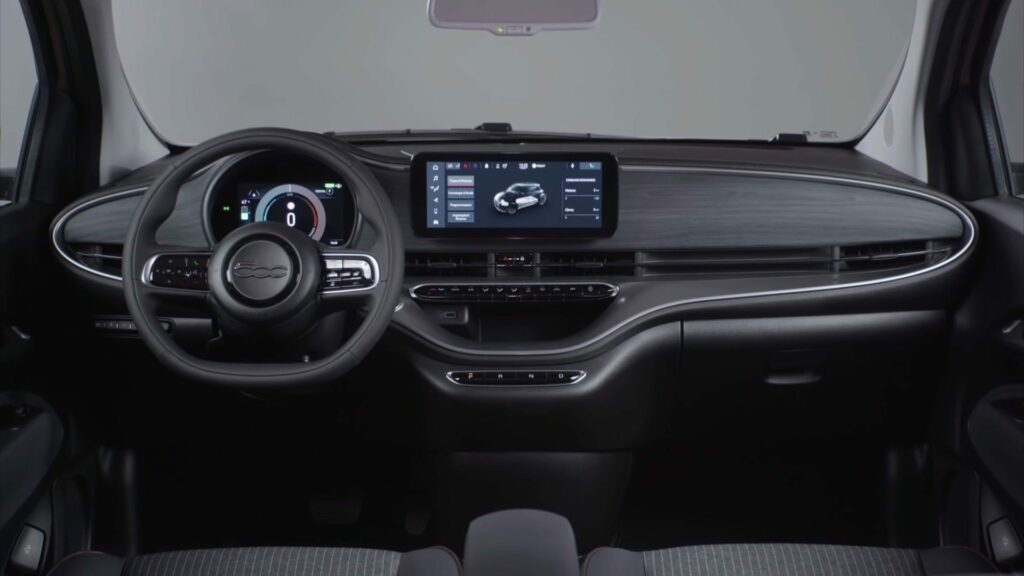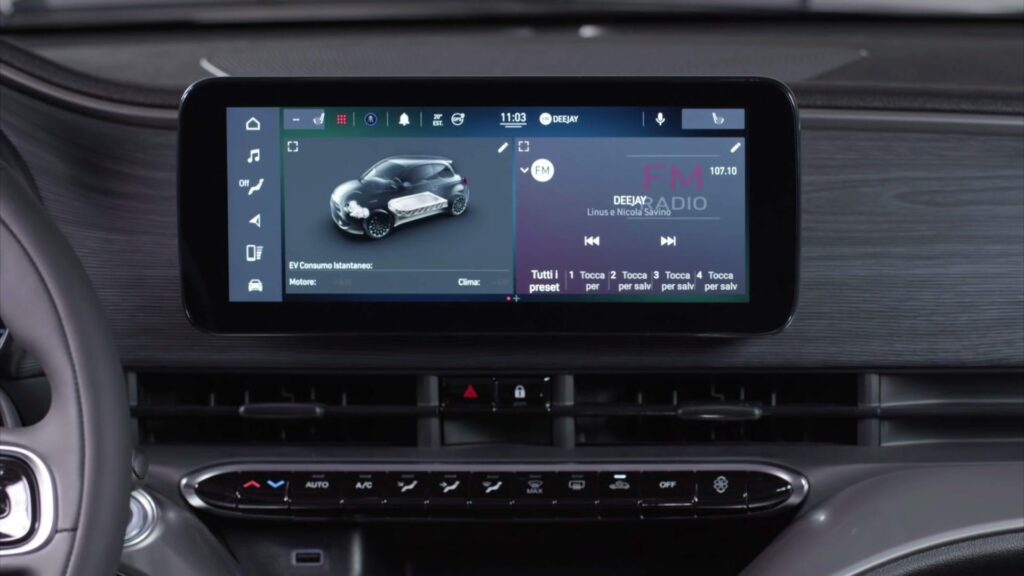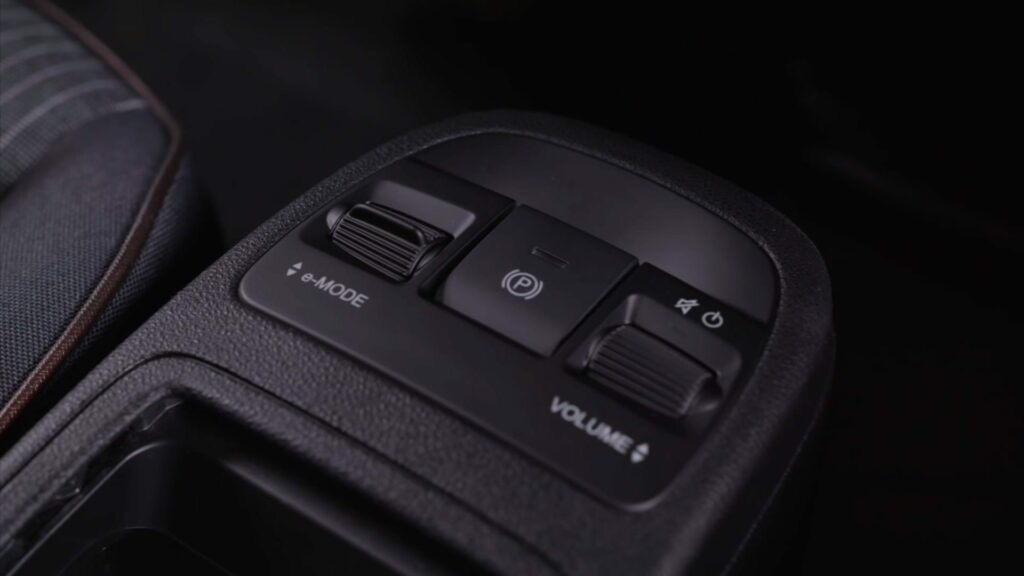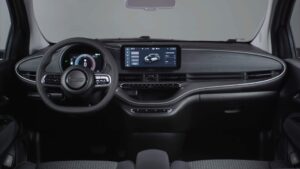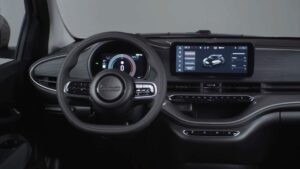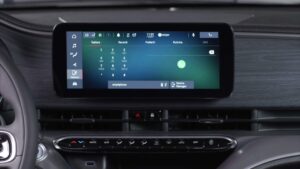Fiat 500e Hatchback 42 kWh
The Fiat 500e is a compact eco-friendly car from the Italian manufacturer, created with a hatchback body. The electric car was introduced in 2012, and a year later it has already entered the mass sale. It is thanks to a bright design in the style of a retro electric car that immediately managed to win great popularity among motorists. The creators planned to emphasize the urban nature of the model, and they succeeded. Visually, the electric car is very similar to its fuel version, but with some changes. There is a wider spoiler at the rear of the model, as well as a slightly transformed air intake grille in the bumper. Also compared to the base model this car has a more reinforced body, as well as a modified suspension and braking system.

Completion of the electric car is at a fairly high level compared to other cars in the class. There is a multimedia system, panoramic sunroof, and climate control system.
As for the interior and exterior, in many respects, the 500e model repeats the features of the traditional version with an internal combustion engine. Here is the same compact body, round headlights in front, a sloping roof, as well as a short hood. Contrasting white inserts on the bumpers and branded 500e logos are among the differences.
Instead of dashboard engineers put a color 7-inch liquid crystal display. You can see information on range, battery status, driving speed, energy consumption, and the selected gear. The dashboard here is equipped with an infotainment system that controls the cabin temperature, navigation, and stereo system. The car also has new windshields and upgraded door seals.
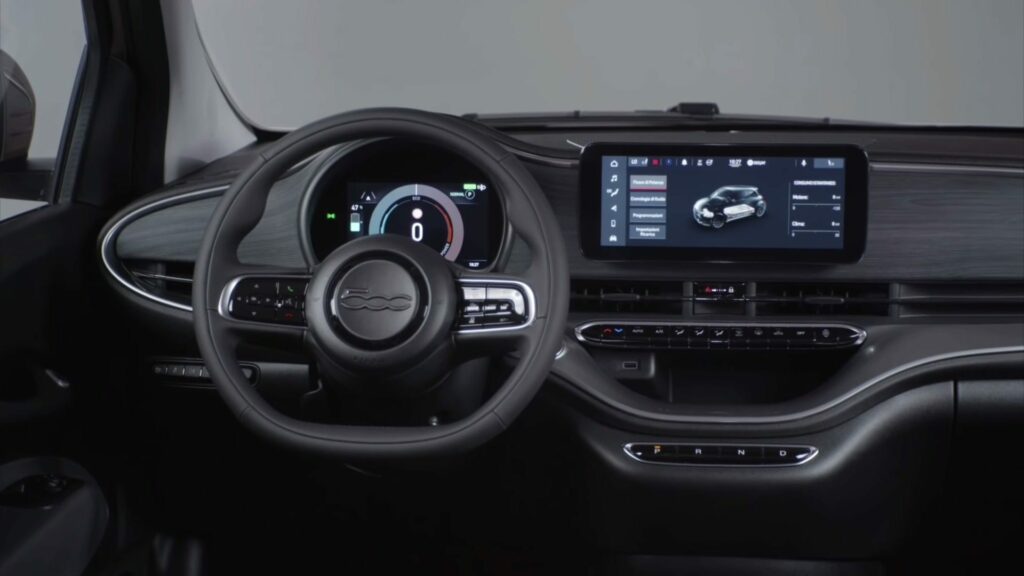
The driver has cruise control and navigation, a multitool that is height-adjustable, a full electric package, and a satellite radio. There are also heated side mirrors, and the rearview mirror is equipped with an automatic dimming system. In the premium versions of the electric car, you can see an additional set of useful features for the driver. Especially for this car developers have created a mobile application that allows you to learn the statistics of energy consumption for past trips, correctly plan the route, take into account the nearby charging stations, understand the overall condition of the electric car, and more.
Everyone will be comfortable in the front seats, regardless of the height and build. A wide range of adjustments allows you to pick the right fit. In the back of the electric car, there are batteries, due to which the passengers of this row may be a little cramped. The most comfortable in the back seats will be children. Or this place can be used for things.
The space of the luggage compartment is also limited. Its volume does not exceed 198 liters. There is not enough space, even if you fold the rear seats.
The basis of the power plant of the car is an electric motor, the power of which is 111 horsepower. At the same time, the torque is 200 Nm. A lithium-ion battery provides power to the electric car. Its capacity is 24 kWh. With good dynamic properties, the electric car can accelerate to 100 km/h in 9.1 seconds. In comparison with other cars in this class, this figure is considered very high. The highest speed achieved by an electric car is 141 km/h. To charge it, you need to use a device with a capacity of 6.6 kW. To fully recharge the battery, the driver will need about 4 hours.
Among the strengths of the electric car that should also be noted is less wear and tear on the brake pads due to the recuperation system. The car is able to rapidly gain speed while driving it is virtually silent.

The safety of the model Fiat 500e is at the highest level. This can include a system of road stabilization, anti-lock brakes, and traction control. In addition, the car is equipped with side and front airbags, as well as knee airbags and head restraints. The system of special parking sensors signals to pedestrians who are nearby that the car is approaching. The basic version of the car is equipped with them. The full stop of the electric car is carried out thanks to the braking system. If we talk about the overall assessment, which put the experts for all active and passive safety systems, it is 4.5 stars. The rating was lowered due to lower scores for the safety of pedestrians and rear-seat passengers.
| Performance | |
| Acceleration 0 – 100 km/h | 9.0 sec |
| Top Speed | 150 km/h |
| Electric Range | 250 km |
| Total Power | 87 kW (118 PS) |
| Total Torque | 220 Nm |
| Drive | Front |
| Battery and Charging | |
| Battery Capacity | 42.0 kWh |
| Battery Useable* | 37.3 kWh |
| Europe | |
| Charge Port | Type 2 |
| Port Location | Right Side – Rear |
| Charge Power | 11 kW AC |
| Charge Time (0->250 km) | 4 hours |
| Charge Speed | 63 km/h |
| Fastcharge Port | CCS |
| FC Port Location | Right Side – Rear |
| Fastcharge Power (max) | 85 kW DC |
| Fastcharge Time (25->200 km) | 25 min |
| Fastcharge Speed | 420 km/h |
| Energy Consumption | |
| EVDB Real Range | |
| Range | 250 km |
| Vehicle Consumption | 149 Wh/km |
| CO2 Emissions | 0 g/km |
| Vehicle Fuel Equivalent | 1.7 l/100km |
| WLTP Ratings | |
| Range | 320 km |
| Rated Consumption | No Data |
| Vehicle Consumption | 117 Wh/km |
| CO2 Emissions | 0 g/km |
| Rated Fuel Equivalent | No Data |
| Vehicle Fuel Equivalent | 1.3 l/100km |
|
Rated = official figures as published by manufacturer. Rated consumption and fuel equivalency figures include charging losses.
|
|
|
Vehicle = calculated battery energy consumption used by the vehicle for propulsion and on-board systems.
|
|
| Real Energy Consumption between 99 – 213 Wh/km | |
| City – Cold Weather | 155 Wh/km |
| Highway – Cold Weather | 213 Wh/km |
| Combined – Cold Weather | 182 Wh/km |
| City – Mild Weather | 99 Wh/km |
| Highway – Mild Weather | 162 Wh/km |
| Combined – Mild Weather | 129 Wh/km |
|
Energy use for each trip will vary considerably depending on the driver and the conditions. Therefore, we have provided a range of estimates which can be useful in developing an understanding of the potential benefits of this technology. |
|
| Dimensions and Weight | |
| Length | 3632 mm |
| Width | 1683 mm |
| Width with mirrors | No Data |
| Height | 1527 mm |
| Wheelbase | 2322 mm |
| Weight Unladen (EU) | 1465 kg |
| Gross Vehicle Weight (GVWR) | 1726 kg |
| Max. Payload | 336 kg |
| Cargo Volume | No Data |
| Cargo Volume Max | No Data |
| Cargo Volume Frunk | No Data |
| Roof Load | No Data |
| Tow Hitch Possible | No Data |
| Towing Weight Unbraked | No Data |
| Towing Weight Braked | No Data |
| Vertical Load Max | No Data |
| Miscellaneous | |
| Seats | 4 people |
| Isofix | No Data |
| Turning Circle | No Data |
| Platform | No Data |
| Car Body | Hatchback |
| Segment | B – Small |
| Roof Rails | No |
| EV Dedicated Platform | No Data |
Home and Destination Charging (0 -> 100%)
A public charging station is required to use the highest possible charging rate. The EVSE/charging station’s charging capacity affects how long it takes to fully charge the battery. The table below shows all possible options for fully charging the Fiat 500e Hatchback 42 kWh.
In Europe, plugging an electric car into an outlet is often as easy as plugging it into a household outlet, but there are differences from country to country. The table below shows the different ways to charge the Fiat 500e Hatchback 42 kWh, but in some countries some chargers may not be available.
Type 2 ( IEC 62196)

| Charging Point | Max. Power | Power | Time | Rate |
| Wall Plug (2.3 kW) | 230V / 1x10A | 2.3 kW | 19h15m | 13 km/h |
| 1-phase 16A (3.7 kW) | 230V / 1x16A | 3.7 kW | 12 hours | 21 km/h |
| 1-phase 32A (7.4 kW) | 230V / 1x32A | 7.4 kW | 6 hours | 42 km/h |
| 3-phase 16A (11 kW) | 400V / 3x16A | 11 kW | 4 hours | 63 km/h |
| 3-phase 32A (22 kW) | 400V / 3x16A | 11 kW | 4 hours | 63 km/h |
Fast Charging (10 -> 80%)
If you want to enjoy driving an electric car, one of the most important features to consider is the number of miles per hour the car can travel while charged. This is called the “range” of the car. All electric cars have a certain range, even if they are 100% charged. This is because they do not have an internal combustion engine to lean on if you need to drive a long distance.
Max. Power: The maximum power provided by the charging point
Avg. Power: The average power provided by the charging point during a session of 10% to 80%.
Time: the time it takes to charge from 10% to 80%
Speed: the average charging rate during the session of 10% to 80%
Combined Charging System (CCS Combo 2)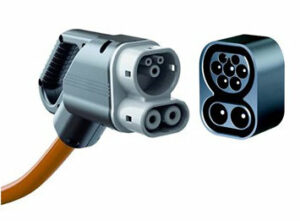
| Charging Point | Max. Power | Avg. Power | Time | Rate |
| CCS (50 kW DC) | 49 kW | 49 kW | 34 min | 300 km/h |
| CCS (175 kW DC) | 85 kW | 67 kW | 25 min | 420 km/h |
| CCS (350 kW DC) | 85 kW | 67 kW | 25 min | 420 km/h |
| Brand | Fiat |
| Body Style | 500e Hatchback 42 kWh |
| Car Engine | electric |
| Motor power | 87 |
| Maximum Torque, Nm | 220 |
| Battery Energy, kWh | 42.0 |
| Power reserve (NEDC/EPA/WLTP), km | - / - / 250 |
| Level Charging (230/400/DC), hours | - / 4.0 / 0.25 |
| Electrical Acceleration, 0-100 km/h (0-62.1 mph) in sec | 9.0 |
| Top Speed, km/h | 150 |






